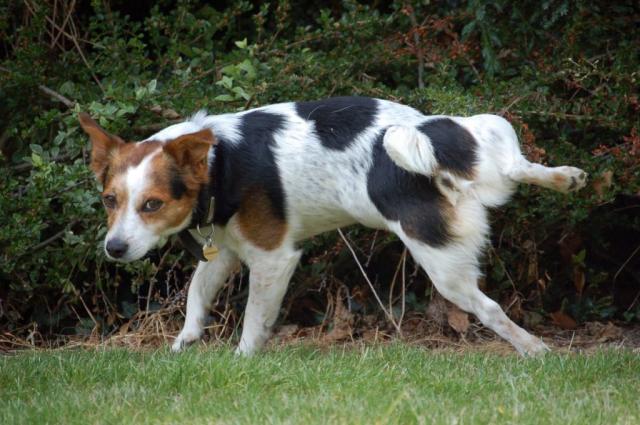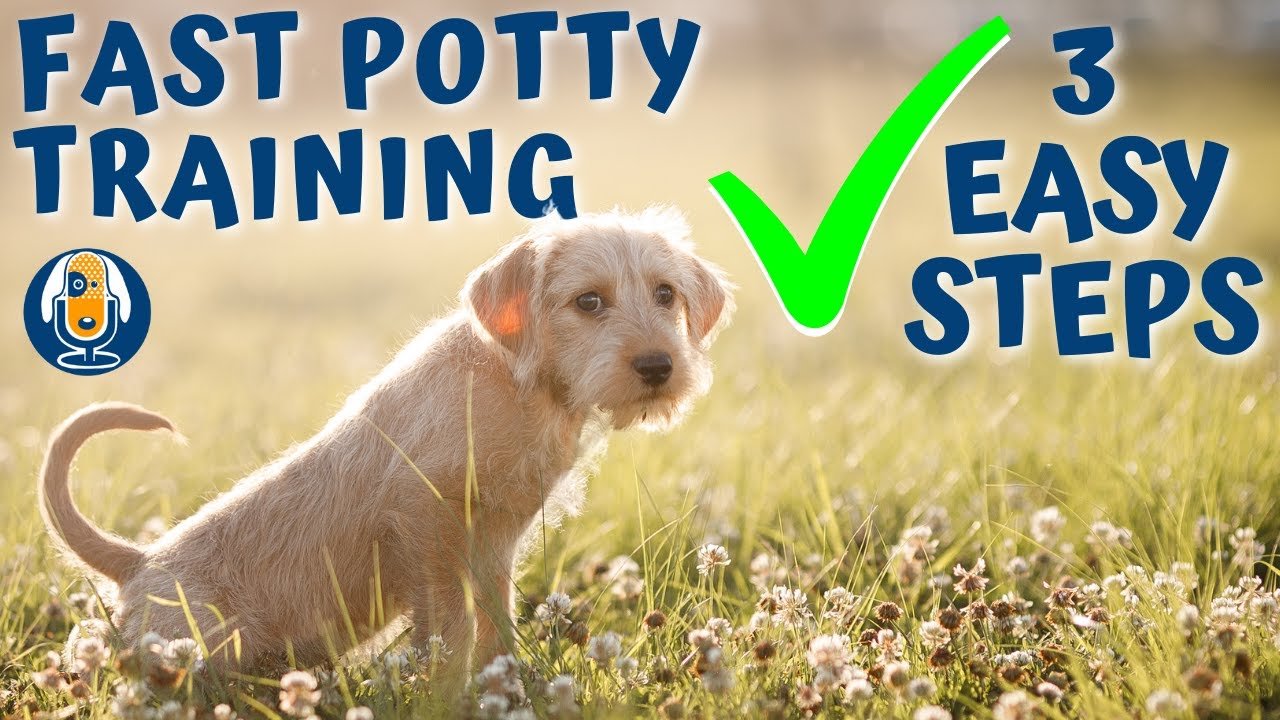To housetrain a dog in 3 steps, take your puppy outside frequently, immediately after waking up, playing, eating, and drinking. Pick a designated bathroom spot outside, and always take your puppy there on a leash.
Reward your puppy every time they eliminate outdoors with treats and enthusiastic praise. By following this routine consistently, you can successfully housetrain your dog.
Understanding Housebreaking
Housebreaking a dog can be achieved with 3 simple steps: observe their habits and create a timetable, control their environment with a puppy Xpen, and establish a designated potty area outside. Consistency and patience are key to successfully housetraining your furry friend.
Housebreaking, also known as housetraining, is a crucial step in ensuring that your new furry friend becomes a well-behaved member of your household. It involves teaching your dog where and when it is appropriate to relieve themselves. Properly housebreaking your dog can save you from future headaches and create a clean and harmonious environment for both you and your pet.
Importance Of Housebreaking
Housebreaking is an essential aspect of dog training as it helps establish a routine and promotes cleanliness. By teaching your dog to only eliminate in designated areas, you prevent accidents and maintain a hygienic living space. Beyond cleanliness, a well-housetrained dog builds trust, enhances the bond between pet and owner, and allows for greater freedom and flexibility in daily activities.
Common Challenges
Housebreaking can present a few challenges that every dog owner should be prepared for. Patience and consistency are key when dealing with accidents, resistance, or confusion from your furry friend. Some common challenges include:
- Accidents indoors: Dogs may have accidents indoors due to lack of understanding or inability to hold their bladder.
- Resistance to designated areas: It may take some time for your dog to adapt to using the designated potty area, leading to accidents elsewhere.
- Inconsistent routine: Inconsistency in the housebreaking routine can confuse your dog and hinder their progress.
By being aware of these challenges and addressing them patiently, you can overcome them and successfully housebreak your dog.
Benefits Of Proper Housebreaking
Proper housebreaking provides numerous benefits to both you and your furry companion. These include:
- Easier cleanup: With a well-housetrained dog, you’ll spend less time cleaning up accidents and more time enjoying your pet’s company.
- Improved hygiene: By teaching your dog to only eliminate in designated areas, you maintain a cleaner living environment for everyone.
- Enhanced bond: The housebreaking process involves consistent communication and positive reinforcement, which can strengthen the bond between you and your dog.
- Flexibility and freedom: A properly housetrained dog can be trusted to hold their bladder and eliminate at appropriate times, allowing for more flexibility in your daily activities.
Understanding the importance of housebreaking, the common challenges that may arise, and the benefits it brings to your life can motivate and guide you through this essential training process. So, let’s delve into the three steps to successfully housetraining your beloved furry friend!

Credit: www.yahoo.com
Step 1: Observation And Timetable
When it comes to housetraining your dog, the first step is to carefully observe their habits and establish a timetable for bathroom breaks. By paying attention to your dog’s behaviors and creating a routine, you can set them up for success in this crucial training process. This step is essential for preventing accidents in the house and teaching your furry friend where and when to go potty.
Paying Attention To Your Dog’s Habits
Observing your dog’s habits is key to understanding their bathroom needs. Look for signs like sniffing around, circling, or squatting, as these indicate that your dog may need to go. By watching their body language closely, you can anticipate when they require a bathroom break and take them outside in a timely manner. Remember, consistency is key, so be sure to reward your dog with verbal praise or a small treat each time they successfully go potty outside.
Creating A Timetable For Bathroom Breaks
Establishing a timetable for bathroom breaks ensures that your dog gets regular opportunities to relieve themselves. Create a schedule based on your dog’s needs, taking into consideration factors such as their age, size, and breed. For example, puppies may need to go out every 1-2 hours, while adult dogs can typically hold it for longer periods. Use an alarm or reminder to keep track of the designated bathroom break times and take your dog outside accordingly. By sticking to a consistent routine, you will help your dog learn to hold their bladder and know when it’s time to go outside.
Additionally, it’s essential to control the environment indoors to prevent accidents during the housetraining process. Use baby gates or a puppy playpen to limit your dog’s access to certain areas of the house. This way, you can keep an eye on them and easily supervise their behavior, reducing the chances of accidents occurring.
Remember, housetraining can take time and patience. Stay consistent, reward your dog for their successes, and be prepared for occasional accidents. With observation, a timetable, and plenty of positive reinforcement, you’ll be well on your way to a well-trained and housebroken dog.
Step 2: Controlling The Environment
In step 2 of housetraining a dog, it is important to control the environment. This involves creating a designated potty area outside and closely monitoring the dog’s behavior to prevent accidents indoors.
Using A Puppy Xpen
One effective way to control the environment during the housetraining process is by using a puppy xpen. A puppy xpen is a portable enclosure that provides a safe space for your dog while also preventing access to the rest of the house. Setting up a puppy xpen helps create a confined area where your furry friend can stay when you cannot directly supervise them.
Here are a few key points to remember when using a puppy xpen:
- Choose an appropriate size xpen that allows your dog to stand, turn around, and lie down comfortably.
- Place the xpen in a designated spot where you can easily clean up any accidents that may occur.
- Provide your dog with a comfortable bed or blanket inside the xpen to make it feel like a cozy den.
- Ensure the xpen is securely locked to prevent any escape attempts.
Establishing A Home Base
In addition to using a puppy xpen, it’s also essential to establish a home base for your dog. A home base can be a crate or a specific area in your house that your dog associates with relaxation and comfort. This designated space helps create a sense of security for your dog and also aids in housetraining.
To establish a home base:
- Choose a quiet area in your home where your dog can have some privacy.
- Place a comfortable bed or crate mat in the home base area.
- Introduce your dog to the home base gradually, allowing it to associate the area with positive experiences and relaxation.
- Encourage your dog to spend time in the home base area by offering treats or favorite toys.
- Use the home base area for nap times or when you cannot directly supervise your dog.
Providing Outside Privacy
Dogs prefer to have some privacy when they go potty, just like humans. Providing outside privacy during housetraining can help your dog feel more comfortable and focused on the task at hand.
Here are some ways to ensure outside privacy:
- Create a designated potty area in your yard that is shielded from view.
- Use tall plants or a privacy fence to create a secluded and quiet space for your dog.
- Minimize distractions in the potty area, such as toys or other animals.
- Stay nearby to provide positive reinforcement and praise when your dog successfully goes potty.
The second step in housetraining your dog is crucial for creating a controlled environment. By using a puppy xpen, establishing a home base, and providing outside privacy, you can set your furry friend up for success in the housetraining process.

Credit: www.walmart.com
Step 3: Reinforcement And Maintenance
After successfully housetraining your dog using the previous steps, it’s essential to continue reinforcing the desired behavior and maintain a consistent routine. Consistency is key to avoid any regression in your dog’s training progress. Here are some important aspects to focus on during this stage:
Rewarding Proper Bathroom Behavior
To encourage your dog to continue eliminating outside, it’s crucial to reward them for their proper bathroom behavior. When your dog successfully goes potty in the designated area, immediately praise them and give them a small treat. Positive reinforcement helps reinforce the connection between the desired behavior and the reward, making your dog more likely to repeat the behavior in the future.
Managing Bedding And Accidents
Accidents can still happen during this stage, so it’s important to manage your dog’s bedding and any indoor accidents properly. Ensure that your dog’s bedding is kept clean and free from any urine or feces. If accidents occur, clean the area thoroughly using a pet-specific cleaner to remove any residual odor that might attract your dog to eliminate in the same spot again.
Being Vigilant Inside The House
Even though your dog has made significant progress in housetraining, it’s crucial to remain vigilant inside the house. Keep an eye on your dog’s behavior and cues that indicate they may need to go potty, such as restlessness or sniffing around. When you notice these signs, quickly take them to the designated potty area to avoid any accidents inside the house.
Maintaining A Consistent Schedule
Stick to a consistent schedule for your dog’s potty breaks. Take them to the designated area at regular intervals throughout the day, including first thing in the morning, after meals, after playtime, and before bedtime. By maintaining a consistent schedule, you reinforce the habit and expectation of regular outdoor bathroom breaks, reducing the likelihood of accidents indoors.
Setting Up A Designated Potty Area
Continue to use the designated potty area for your dog’s bathroom needs. Designate a specific spot in your yard, balcony, or even an indoor potty area if necessary. Make sure the area is easily accessible and remains clean. Using verbal cues such as “Go potty” or a specific command encourages your dog to understand what behavior is expected in that specific area.
By following these reinforcement and maintenance steps, you can ensure that your dog remains consistently housetrained. Remember, patience and consistency are key throughout this process. With time and proper reinforcement, your furry friend will become a housetraining champion!
Additional Tips And Tricks
Potty training a dog requires consistency, patience, and positive reinforcement. While the three main steps of house training a dog are essential, there are additional tips and tricks that can make the process smoother and more effective. Here are some valuable insights to help you in your dog’s potty training journey:
Using Verbal Praise And Positive Reinforcement
When it comes to potty training, dogs respond well to positive reinforcement. Utilize verbal praise, encouraging words, and treats as rewards for successful potty visits. This will help your dog associate the desired behavior with positive outcomes. Remember to use a happy and enthusiastic tone while praising your dog, reinforcing good habits.
Dealing With Accidents Indoors
Accidents are an inevitable part of the housetraining process. Instead of punishing your dog for accidents, focus on redirecting their attention to appropriate potty areas. Clean up the messes with enzymatic cleaners to eliminate any lingering odors that may attract them back to the same spot. Consistency and patience are key in reinforcing the desired behavior and preventing future accidents.
Identifying Potty Signals
Understanding your dog’s specific potty signals is crucial in successful housetraining. Dogs often display specific behaviors, such as sniffing the ground, pacing, or circling, when they need to relieve themselves. Pay close attention to these signals and promptly take your dog outside to their designated potty area. By recognizing and responding to these cues, you can avoid accidents indoors and reinforce the appropriate potty behavior.
Using The Right Tools And Products
Using the right tools and products can greatly assist in the housetraining process. Consider using puppy pads, doggy doorbells, or indoor potty training sprays to aid in establishing a designated potty area for your dog. These tools can help guide your dog’s behavior and provide them with clear cues and boundaries. Additionally, invest in enzymatic cleaners to eliminate odors and prevent repeat accidents in the same spot.

Credit: dogtime.com
Frequently Asked Questions For 3 Steps To Housetraining A Dog
What Are The Steps To Potty Train A Dog?
To potty train a dog, follow these steps: 1. Take your puppy outside frequently, especially after waking up, playing, or eating. 2. Choose a designated bathroom spot outside and always take your pup there on a leash. 3. Praise and reward your dog immediately after they eliminate outdoors.
4. Use verbal praise and treats to reinforce good behavior. 5. Stay consistent and patient throughout the training process.
What Is The Proper Way To House Train A Dog?
To properly house train a dog, follow these steps: 1. Take your puppy outside frequently, especially after waking up, playing, and eating. 2. Choose a designated bathroom spot outside and always take them there on a leash. 3. Reward your puppy with treats and enthusiastic praise when they eliminate outside.
4. Clean up any accidents promptly and without punishment. 5. Use consistency, patience, and positive reinforcement throughout the training process.
What Are The Three Keys To Dog Training?
The three keys to dog training are consistency, patience, and fun. These are essential for successful training.
What Are The Tips And Tricks For Potty Training Dogs?
Tips and tricks for potty training dogs include taking them outside regularly, using a leash, rewarding successful potty visits, learning their signals, and crating them when unsupervised.
Conclusion
To successfully housetrain your dog, follow these three simple steps: establish a potty routine, reinforce positive behaviors, and be patient. Consistency is key when it comes to training your furry friend. Remember to reward your dog for successful potty visits and praise them enthusiastically.
With time and practice, your dog will learn where and when to go potty. Stay committed, be patient, and enjoy the process of helping your dog become housetrained. Happy training!







